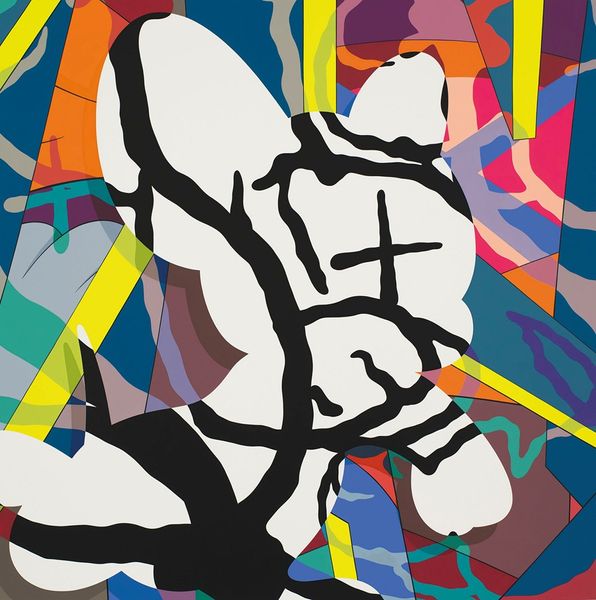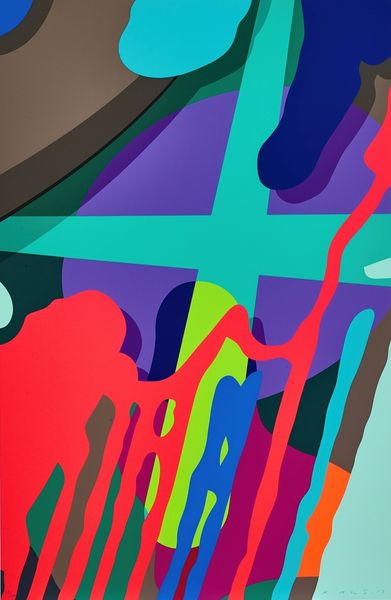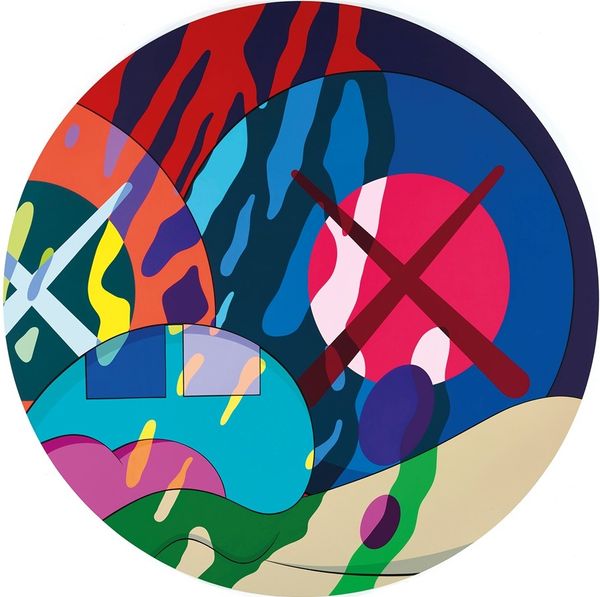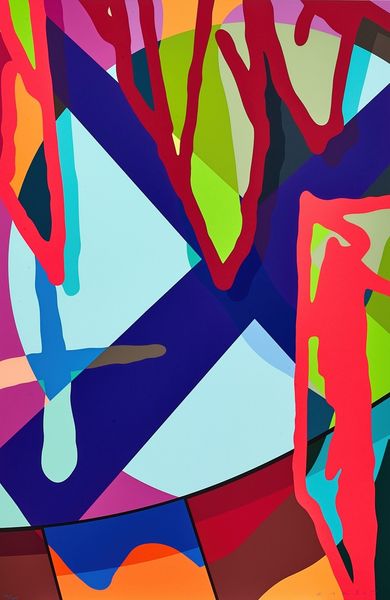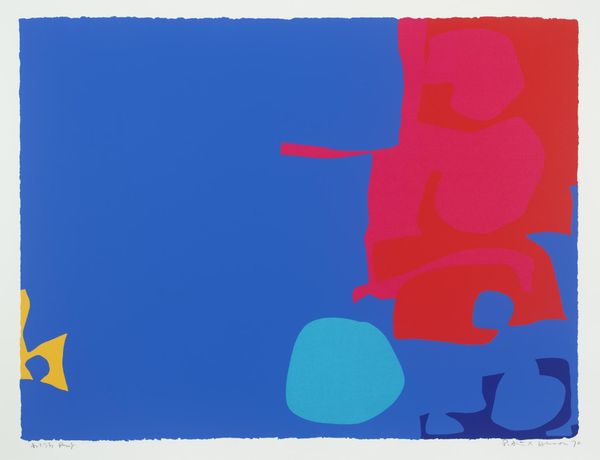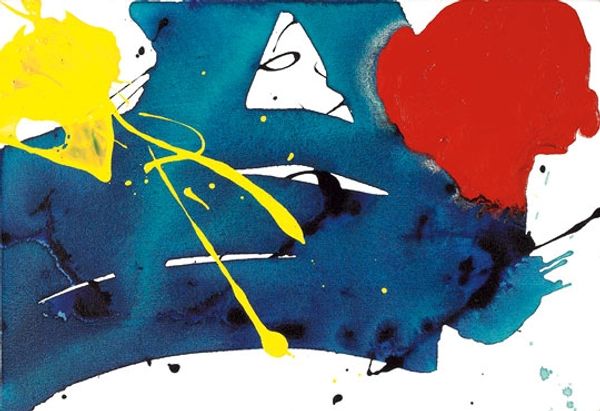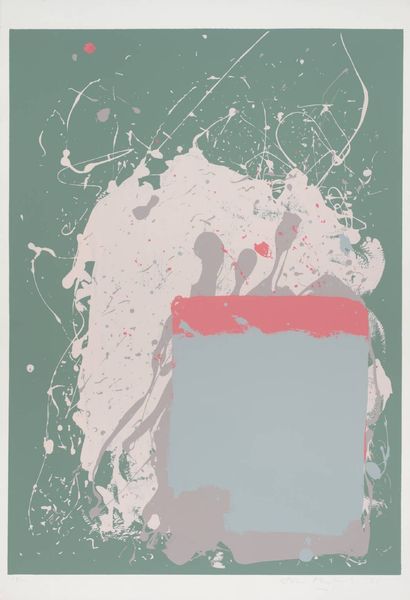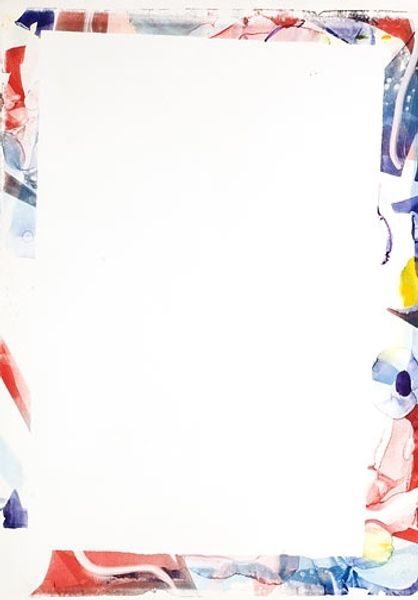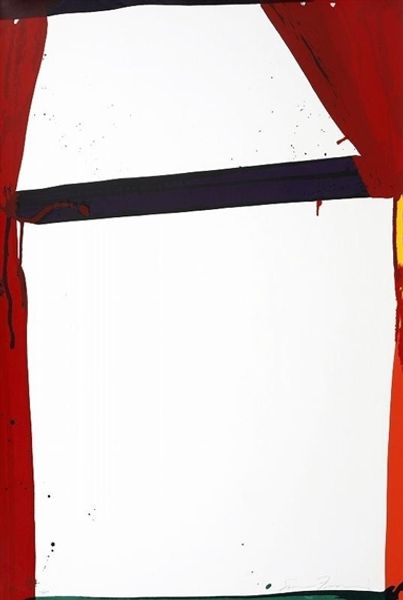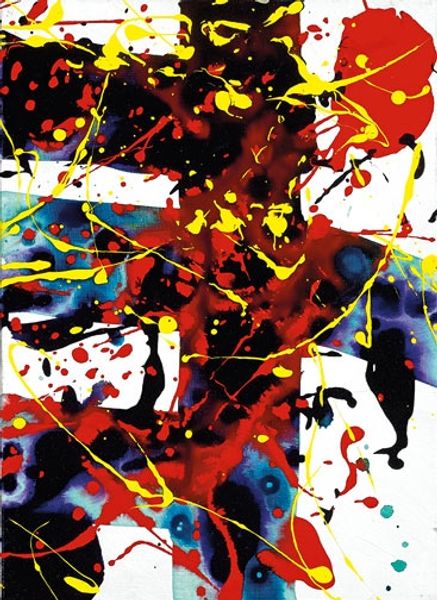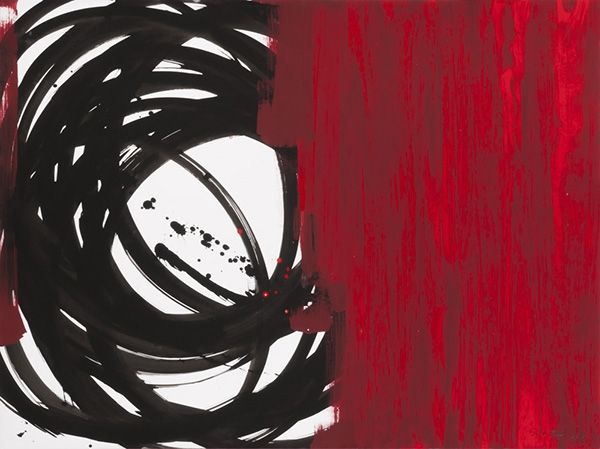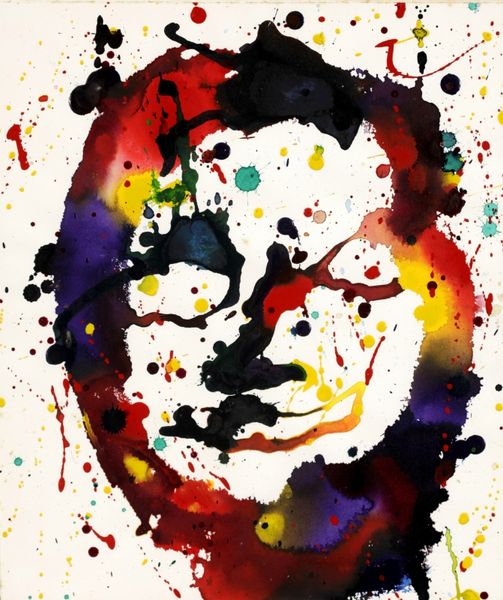
Copyright: Modern Artists: Artvee
Editor: This is KAWS' "The Final Machine," an acrylic painting from 2015. The bold colors and clean lines give it a cool, almost detached feel. What strikes me is the tension between recognizable shapes and total abstraction. What do you see in this piece? Curator: It's interesting that you pick up on detachment. For me, KAWS' work operates within a complex web of cultural references. His roots in graffiti and street art directly challenge the art establishment and bring art to the masses. When considering his cartoonish figures like this through an intersectional lens, we can observe how themes of consumerism, identity, and appropriation become important factors. Editor: Appropriation, how so? Curator: Well, think about it. KAWS appropriates familiar cartoon imagery but deconstructs and abstracts them. Are they simply empty signifiers in our increasingly mediated world? How does the painting invite a critical examination of our relationship with pop culture? And what's your take on the composition? Editor: I hadn't considered the social commentary. As for the composition, the overlaid shapes, the double Xs on the one side, seem to simultaneously obscure and reveal something. Curator: Precisely! That obscuring is crucial. Doesn't it ask: what are we meant to see, and what are we actively prevented from seeing, by these pop cultural filters? It reminds me of some post-structuralist theory; the more accessible the image, the more layers are actively being hidden beneath it. Editor: So, it's about more than just cool shapes and familiar imagery. It is about a wider critique about society’s dependence on pop culture for constructing the world? I see it now. Thanks. Curator: Exactly! The “Final Machine” may signify the inescapable force pop culture has had upon current generations.
Comments
No comments
Be the first to comment and join the conversation on the ultimate creative platform.
